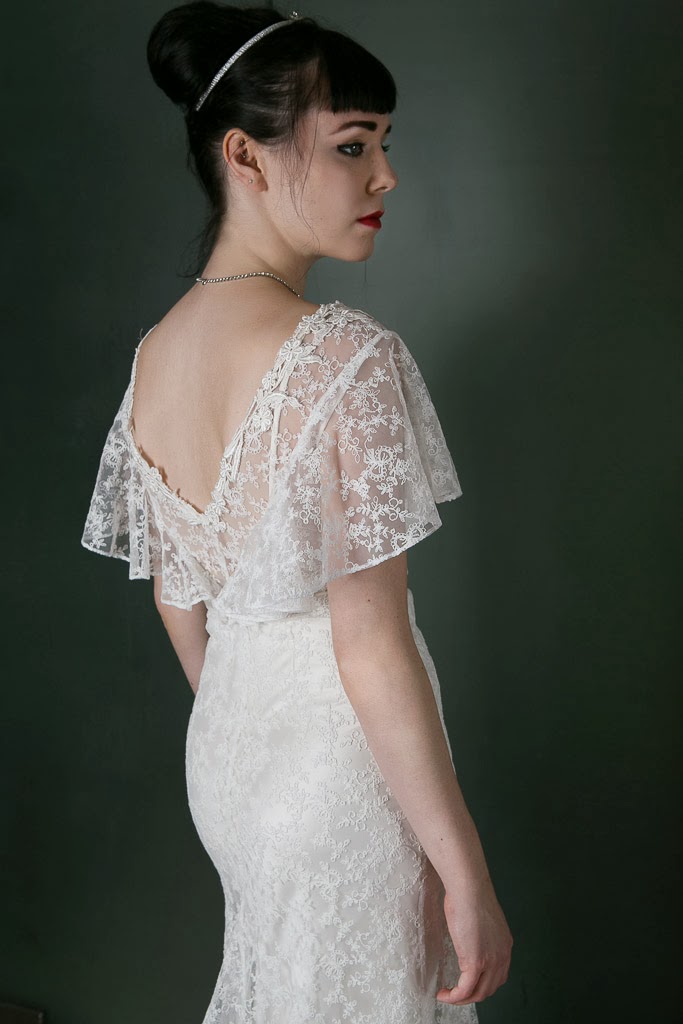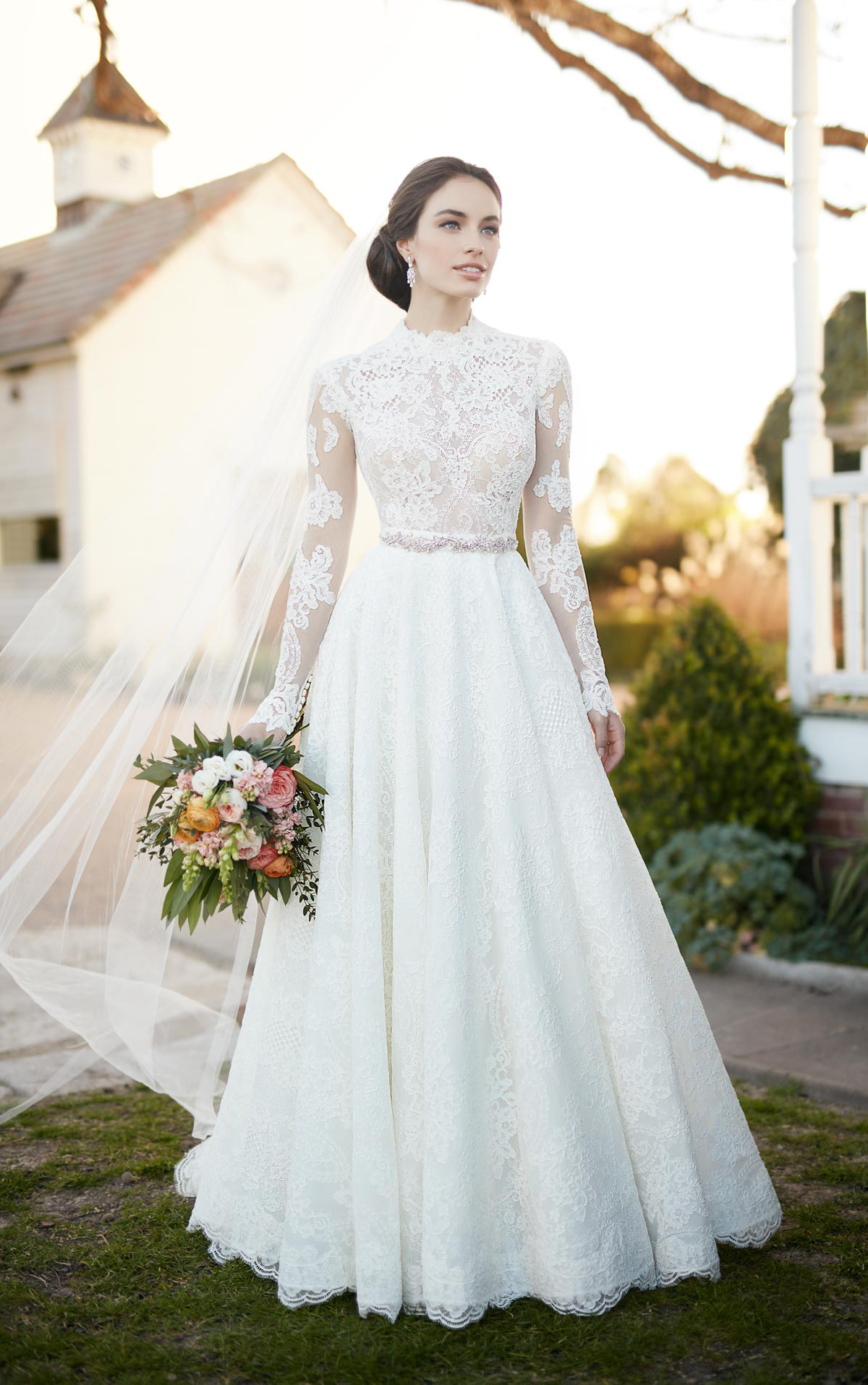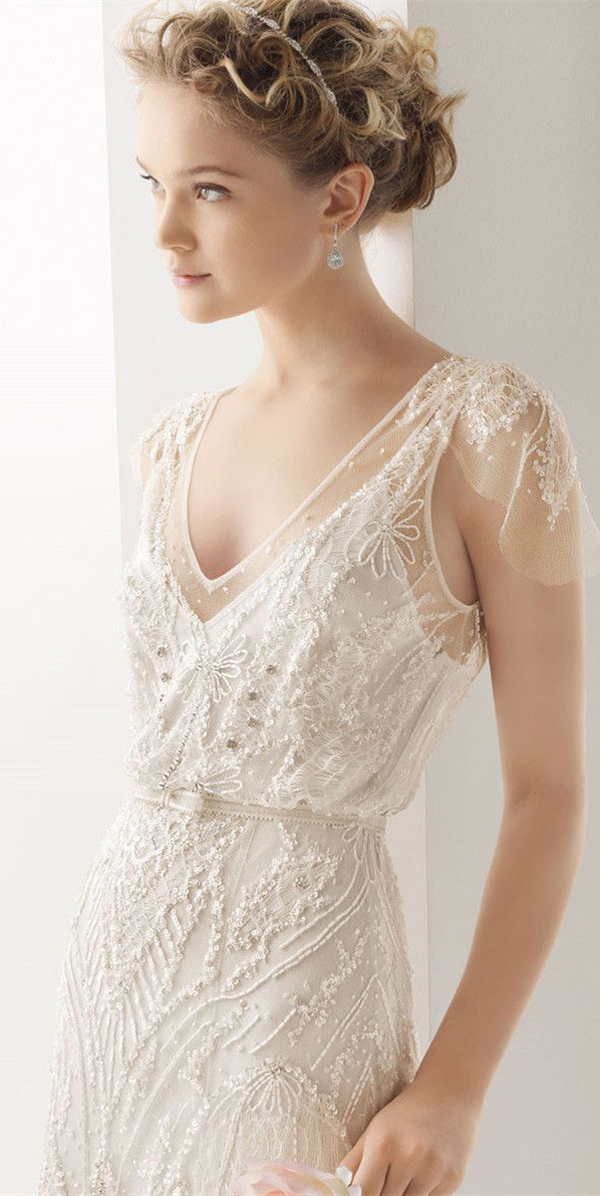Vintage Wedding Dress

A vintage wedding dress is a gown that has been designed and made in a previous era, typically at least 20 years ago. Vintage wedding dresses are often sought after by brides who want a unique and stylish look for their wedding day.

There are many different styles of vintage wedding dresses, from simple and elegant gowns to more elaborate and dramatic designs. Some of the most popular vintage wedding dress styles include:

- 1920s: Flapper dresses with short skirts and low waistlines are a popular choice for brides who want a vintage look with a modern twist.
- 1930s: Bias-cut gowns with long, flowing skirts are a classic vintage style that is both elegant and glamorous.
- 1940s: Wartime brides often wore simple, yet stylish dresses with nipped-in waists and full skirts.
- 1950s: Full-skirted gowns with fitted bodices are a popular choice for brides who want a vintage look with a touch of glamour.
- 1960s: Mod dresses with short skirts and geometric patterns are a fun and trendy choice for brides who want a vintage look with a modern edge.
When shopping for a vintage wedding dress, it is important to keep in mind the following tips:
- Start your search early. Vintage wedding dresses can be difficult to find, so it is important to start your search early to give yourself plenty of time to find the perfect dress.
- Be open to different styles. There are many different styles of vintage wedding dresses available, so don’t limit your search to just one or two styles. Be open to trying on different styles to find the one that best suits your body type and personality.
- Consider your budget. Vintage wedding dresses can range in price from a few hundred dollars to several thousand dollars. It is important to set a budget before you start shopping so that you don’t overspend.
- Get the dress altered to fit. Once you have found the perfect vintage wedding dress, it is important to have it altered to fit your body perfectly. A good seamstress can help you to make sure that the dress fits you like a glove.
With a little planning and research, you can find the perfect vintage wedding dress for your big day.## [Vintage Wedding Dress]
Executive Summary
Vintage wedding dresses have become increasingly popular in recent years. The unique and romantic aesthetic of these dresses appeals to brides who want to create a timeless and sophisticated look on their wedding day. In this article, we will explore the allure of vintage wedding dresses, discuss the different styles and eras to choose from, and provide tips for finding and caring for the perfect vintage dress.
Introduction
The allure of vintage wedding dresses lies in their ability to transport brides to another time and place. Whether you dream of a glamorous Hollywood gown from the 1920s or a delicate lace dress from the Victorian era, there is a vintage wedding dress that will suit your unique style and personality.
FAQs
-
Where can I find a vintage wedding dress?
- Bridal boutiques, online retailers, and vintage clothing stores often have a selection of vintage wedding dresses.
- You can also try your luck at thrift stores or estate sales.
-
How can I tell if a vintage dress is authentic?
- Look for details that are consistent with the era of the dress, such as the fabric, lace, and beading.
- Check for any signs of damage or wear that may indicate the dress has been altered or repaired.
-
How do I care for a vintage wedding dress?
- Dry cleaning is the safest way to clean a vintage wedding dress.
- Store the dress in a cool, dry place, away from direct sunlight and moisture.
- Use a dress form or hanger to support the dress and prevent wrinkles.
Styles and Eras
Vintage wedding dresses come in a wide variety of styles and eras. Here are some of the most popular:
Victorian Era (1837-1901)
- Characteristics: High necklines, long sleeves, full skirts, and elaborate lace and embroidery.
- Important pieces:
- Crinoline: A hoop skirt that gives the dress its full shape.
- Bustle: A fabric gathering at the back of the skirt that creates a dramatic silhouette.
- Lace: Intricate lace was often used to decorate the bodice and sleeves of Victorian wedding dresses.
- Veil: Long, flowing veils were a popular accessory for Victorian brides.
Edwardian Era (1901-1910)
- Characteristics: Less formal than Victorian dresses, Edwardian dresses featured looser silhouettes, lower necklines, and more intricate beading and embroidery.
- Important pieces:
- High waistline: The waistline was often raised, creating an elongated and elegant silhouette.
- Lace and embroidery: Delicate lace and embroidery were used to embellish the bodice and sleeves.
- Beaded trim: Beading was often used to create intricate designs on the bodice and skirt.
- Veil: Shorter veils were more common during the Edwardian era.
1920s
- Characteristics: Flapper dresses were popular during the 1920s, featuring low waistlines, short skirts, and intricate beading and embroidery.
- Important pieces:
- Dropped waistline: The waistline was often dropped below the natural waist, creating a relaxed and informal silhouette.
- Fringe: Fringe was a popular embellishment for 1920s dresses.
- Beading and embroidery: Intricate beading and embroidery were used to create geometric and Art Deco designs.
- Headpiece: Cloche hats and headbands were often worn with 1920s wedding dresses.
1930s
- Characteristics: Bias-cut dresses were popular during the 1930s, featuring flowing skirts and elegant draping.
- Important pieces:
- Bias cut: The fabric was cut on the bias, which allowed it to drape and flow more easily.
- Draped bodice: The bodice was often draped to create a flattering and feminine silhouette.
- Lace and chiffon: Lace and chiffon were popular fabrics for 1930s wedding dresses.
- Veil: Long, flowing veils were still popular during the 1930s.
1940s
- Characteristics: Wartime rationing during the 1940s led to simpler silhouettes and more modest fabrics.
- Important pieces:
- Utility fabrics: Cotton, rayon, and wool were commonly used for wartime wedding dresses.
- Square neckline: Square necklines were popular during the 1940s.
- Puff sleeves: Puff sleeves added a touch of femininity to wartime wedding dresses.
- Veil: Shorter veils were more common during the 1940s.
Conclusion
Vintage wedding dresses offer a timeless and sophisticated look for brides who want to create a unique and memorable wedding day. Whether you choose a glamorous gown from the 1920s or a delicate lace dress from the Victorian era, there is a vintage wedding dress that will suit your personal style and make you feel like a truly special bride.
Keyword Tags
- Vintage wedding dress
- Victorian wedding dress
- Edwardian wedding dress
- 1920s wedding dress
- 1930s wedding dress






